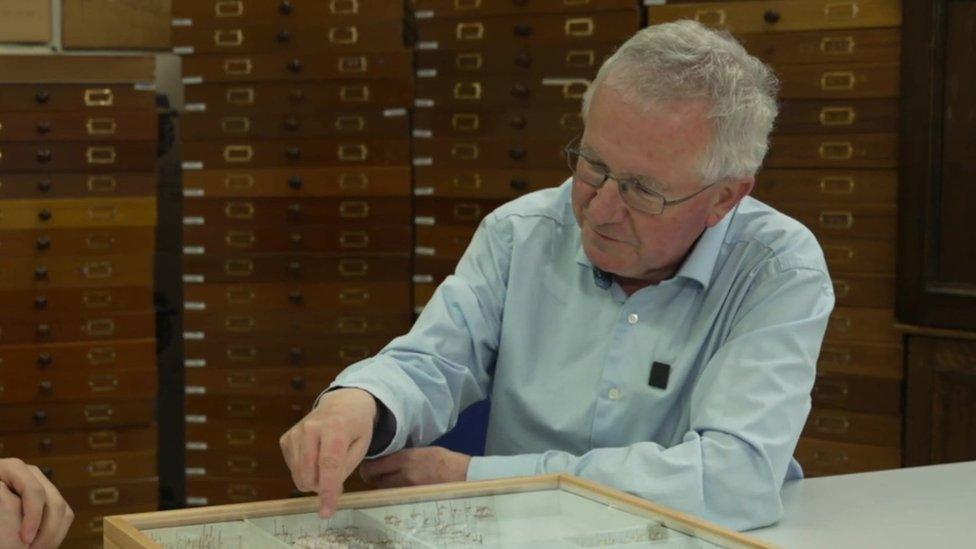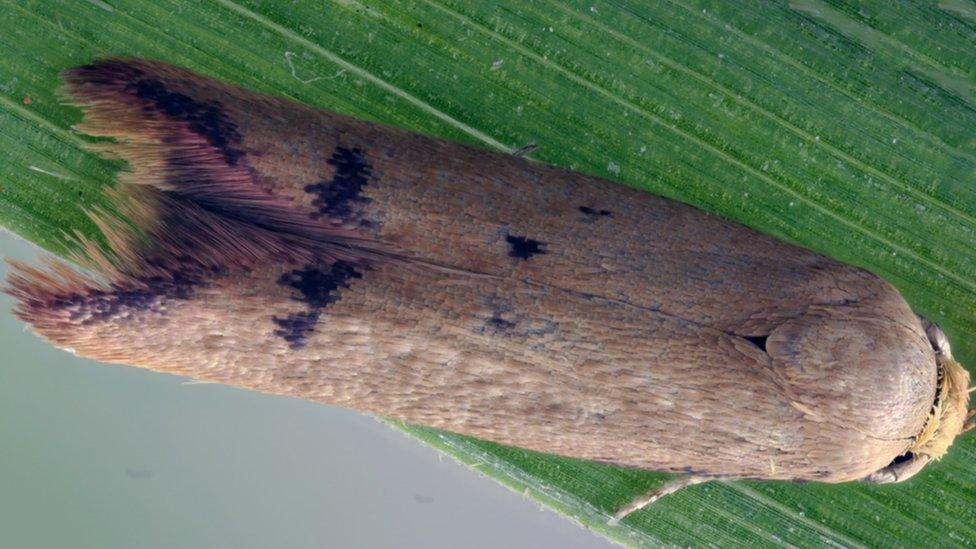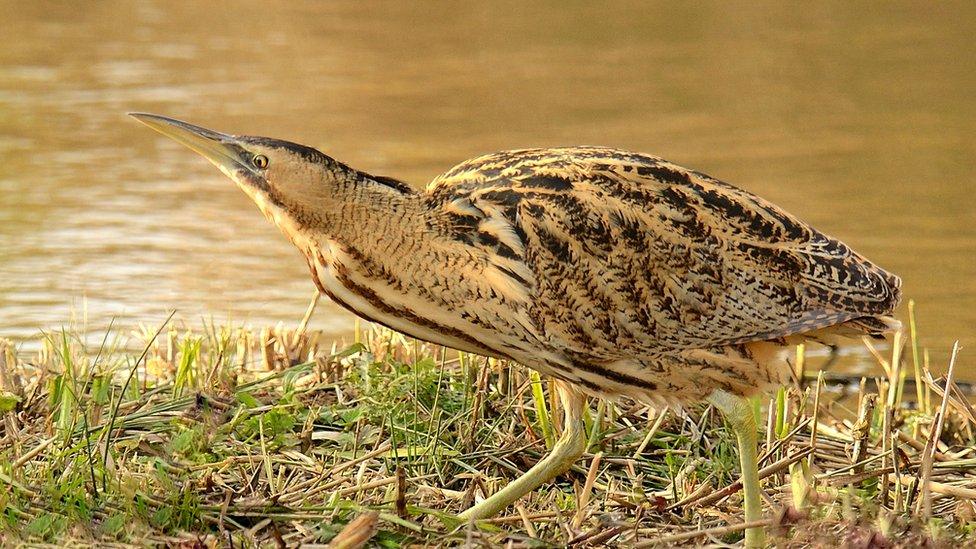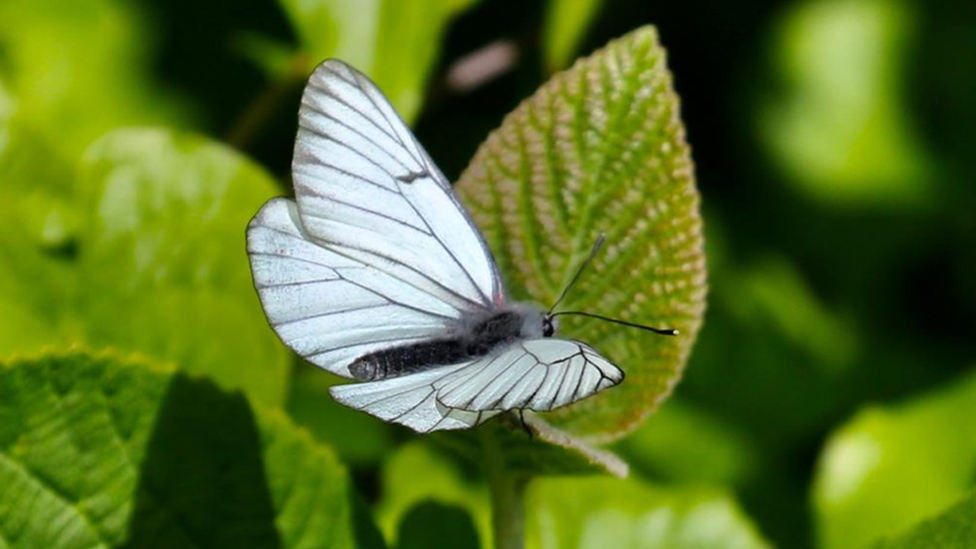Ealing: New species of moth discovered in west London park
- Published

The moth has been named Tachystola mulliganae, after Barbara Mulligan who found it
A lifelong moth enthusiast has discovered a new species at her local park in Ealing, west London.
Barbara Mulligan caught the tiny insect in her moth trap at Walpole Park and sent it to the Natural History Museum for testing.
Through DNA analysis, the museum confirmed the find was unknown to science.
"It's nice to think I'll be forever remembered by a moth" said Ms Mulligan, after the announcement.

Barbara Mulligan remains the only person in the UK to have caught the moth
Ms Mulligan has been catching and breeding moths since she was 10 years old and said the news was "a lovely surprise".
"One thing I never thought would ever happen was that I'd find a new species," she said.
The retired housing finance officer has since found more of the moths in three other locations around Ealing.
Despite decades of experience, Ms Mulligan was unable to identify the initial moth she had caught, so sent the specimen to her local moth recorder, who was also stumped.
It was then handed over to Mark Sterling, a local expert and scientific associate at the Natural History Museum.

Mark Sterling helped describe the physical characteristics of the moth
Mr Sterling is part of the museum's microlepidoptera unit, which looks after millions of small moths.
He performed detailed analysis of the insect - which has a wing length of just 8mm - and described its shape and anatomy.
This led to the team to deduce that it belongs to the genus Tachystola, which originates from Australia.
But none were a perfect match.
Mr Sterling then realised that this may be something new: "It was the first time I had ever seen a new species to science from the UK, so I was pretty excited."

Dr David Lees analysed the historical collections to prove that it was a new species
There are tens of millions of moth specimens held at the Natural History Museum, some dating back hundreds of years.
To prove that Ms Mulligan's moth was unknown, microlepidoptera unit curator Dr David Lees and the museum molecular team conducted cutting-edge DNA sequencing on their historical collections.
Among the collections were a series of Tachystola specimens found in Australia in 1886.
Using a leg from these species and a leg from Ms Mulligan's moth, Dr Lees was able to conclude that they were genetically different.
However, there was one specimen in the 137-year-old collection that was unknown, unnamed and undocumented.
Dr Lees tested Ms Mulligan's find against this mystery moth, which had been found in Western Australia.
"When the result came back we were amazed - gobsmacked in fact," said Dr Lees.
"The sequence was practically identical."

How the moth came to the UK remains unknown
Ms Mulligan's moth from Walpole Park has since been declared a new species, Tachystola mulliganae, and published in The Entomologists Record and Journal of Variation, external.
In a final twist to the tale, Dr Lees looked to see where in Australia the unnamed moth from the museum's collection had been found back in 1886.
The district's name? Walpole.

Listen to the best of BBC Radio London on Sounds and follow BBC London on Facebook, external, X, external and Instagram, external. Send your story ideas to hello.bbclondon@bbc.co.uk
- Published23 November 2023

- Published4 June 2023

- Published15 November 2022